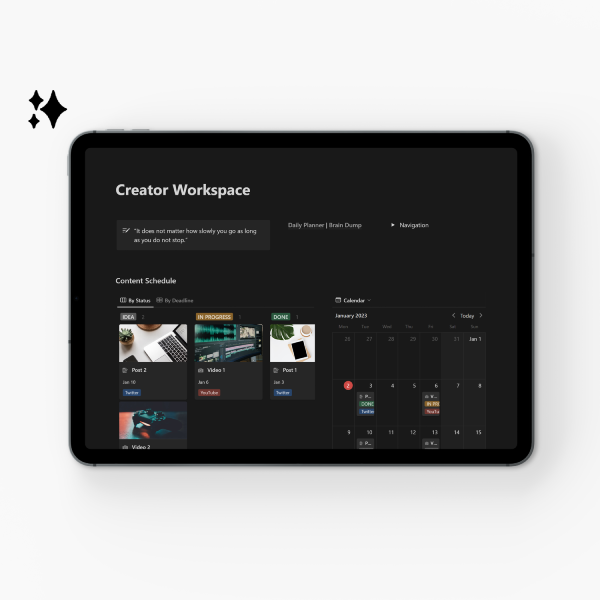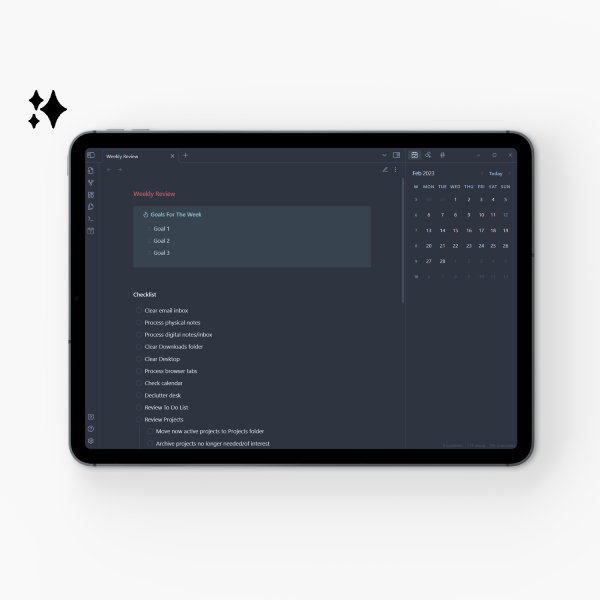A neurodivergent-friendly approach to productivity for creators and freelancers, with practical strategies like flexible goals, guilt-free breaks, and self-compassion.
Jump to section:
Introduction
As a neurodivergent creator, freelancer, or someone with chronic health conditions, you’ve likely heard the usual productivity advice: “Don’t work from bed,” “Get out of your comfort zone,” or “You need a dedicated workspace to be productive.”
While this advice might work for some people, it doesn’t take into account the realities of those who face challenges like chronic pain, depression, or neurodivergence.
In this post, I’ll share some practical tips on how to navigate productivity in a way that works for you, even if it means working from bed or using non-traditional setups.
Why “Work from Bed” Can Actually Work
We’ve all heard the advice to avoid working from bed, but for some of us, that’s exactly what we need to be productive. For those dealing with depression, chronic fatigue, or chronic pain, getting out of bed might not always be possible—and that’s okay. Here’s why:
-
Comfort is key: If you’re dealing with chronic pain or mental health struggles, comfort is essential. Working from a comfortable, supportive space—like your bed or a couch—can help you focus better than trying to force yourself into a rigid desk setup.
-
Productivity is personal: Productivity doesn’t look the same for everyone. It’s about getting things done in a way that suits your body and mind. Whether you’re working from bed or a chair, as long as you’re making progress, it counts.
Adapting to What Works for You
Mainstream productivity advice tends to assume that everyone has the same capabilities or work style. But what works for neurotypical, able-bodied people doesn’t always apply to those of us with different needs.
“You’re not behind, you’re not broken—you’re adapting. And that’s powerful.”
Here are a few ways you can adjust your approach to fit your unique situation.
1. Set Flexible, Realistic Goals
Instead of following a strict, to-do list mentality, break down your tasks into small, manageable steps. On tough days, when dealing with difficulties such as low energy or pain, aim to complete just one part of a task. This can look like drafting an outline or writing a single paragraph.
When setting goals, try using the SMART method, but with a twist—make sure it’s gentle and realistic for your current energy level. For example:
-
Specific: “Write the intro paragraph” instead of “Work on blog post”
-
Measurable: You’ll know it’s done when the paragraph is written
-
Achievable: One paragraph is doable, even on a low-energy day
-
Relevant: It moves your writing project forward
-
Time-bound: “By the end of today” or “Before lunch,” but allow wiggle room
Don’t force yourself to work in one sitting if it doesn’t feel possible—take breaks when you need them.
2. Use Adaptive Tech Tools
Tech tools help make work easier for those with specific needs. There are tons of tools that can make your workday more manageable, especially if you’re dealing with fatigue or other challenges. Here are a few tools that might help:
-
Speech-to-text software: If you’re too tired to type or your hands hurt, use speech-to-text apps like Voice Notes, Cleft, or Dictanote .
-
Ergonomic devices: Check out ergonomic devices like the Logitech ERGO K860 keyboard and Logitech LIFT vertical mouse to save your hands and wrists.
-
Task management apps: Tools like Notion, Trello, or Todoist allow you to break down your tasks into smaller, easy-to-manage pieces. You can set reminders and check off items as you go—no need to keep everything in your head.
-
Focus timers: The Pomodoro method (25 minutes of work, followed by a 5-minute break) can help you focus without overexerting yourself. Apps like Be Focused or Goodtime make it easy to stick to these intervals.
3. Create a Comfortable Workspace
If working at a desk feels draining, try working in spaces that are more comfortable for you. This might mean setting up at a couch, bed, or even a cozy nook in your home.
The goal is to create an environment where you feel comfortable and able to focus—whether that’s with a blanket, pillows, or a favorite chair.
Find a space that feels safe and conducive to focus. Experiment with different setups to see what feels best for you.
I personally love having a heated blanket on me at all times, and I make sure to only have the tools necessary with me—clutter can add to overwhelm. Plus I use ergonomic devices where possible.
The key is comfort and finding a space where you can be productive, even if it’s not the “ideal” work environment. As long as you’re working with what you have, adjusting to your needs, and still making progress—no matter how small—that’s a win.
4. Schedule Breaks Into Your Day
When your body or mind needs rest, make it a part of the workflow. Build breaks into your day without guilt.
Taking breaks isn’t a waste of time—it’s an essential part of staying productive. Make time for short breaks throughout your day, whether it’s a 10-minute (or 90-minute) rest, a short walk, or a quick creative activity to recharge.
If you’re feeling physically or mentally drained, it’s okay to step away and come back to your tasks later.
5. Lean Into Self Compassion
Rest and flexibility are essential for long-term success. Be kind to yourself when you need a break and know that adjusting your productivity to your body’s needs is not only okay, it’s necessary.
There will be days when working from bed is all you can manage, and that’s perfectly fine. Whether it’s due to physical pain, mental fatigue, or just needing comfort, working from bed doesn’t mean you’re slacking. It means you’re showing up in the best way you can that day, and that’s what matters.
I’ve had days—and sometimes even weeks—where chronic pain made it impossible to do anything other than work from bed. During those times, I’ve had to cancel streams, cut back on projects, and shift self-imposed deadlines to accommodate my body’s limitations.
It might feel like failure, but I promise—it’s not.
6. Honor Your Energy Levels
Not every day will be a “productive” day in the traditional sense, and that’s fine. On low-energy days, aim for progress over perfection.
If you can only manage a small task, like checking emails or organizing your to-do list, that’s still a win. It’s important to recognize when your body or mind needs rest and to adjust your goals accordingly.
Conclusion
Productivity isn’t about fitting into a mold—it’s about finding what works for your body, mind, and unique needs. If that means working from bed, using adaptive tools, or taking more frequent breaks, that’s perfectly valid. The key is to focus on progress, not perfection.
Remember, just because traditional advice doesn’t work for you doesn’t mean you’re failing. You’re finding ways to work that suit your needs.
Your way of working is still valid. You’re not behind, you’re not broken—you’re adapting. And that’s powerful.
Recommended Posts

Protecting Your Privacy As A Streamer
A guide to help streamers protect their privacy online and in-person, including tips for safeguarding finances, address, accounts, and physical...
Continue Reading
Best Productivity Tools For Digital Minimalism
From search enhancers and distraction blockers to note-taking apps and file organizers, these tools will help you declutter your digital...
Continue Reading
Improve Accessibility & User Experience On Twitch
Want to make your Twitch stream more accessible or are you having a hard time navigating Twitch? This article lists...
Continue Reading

